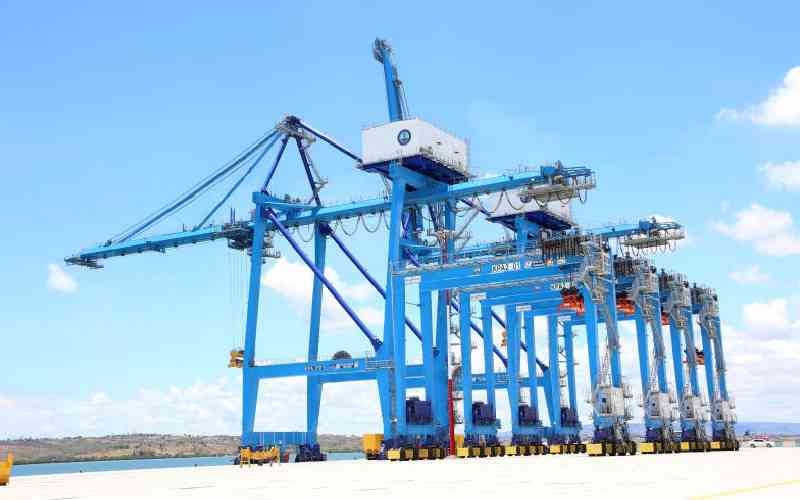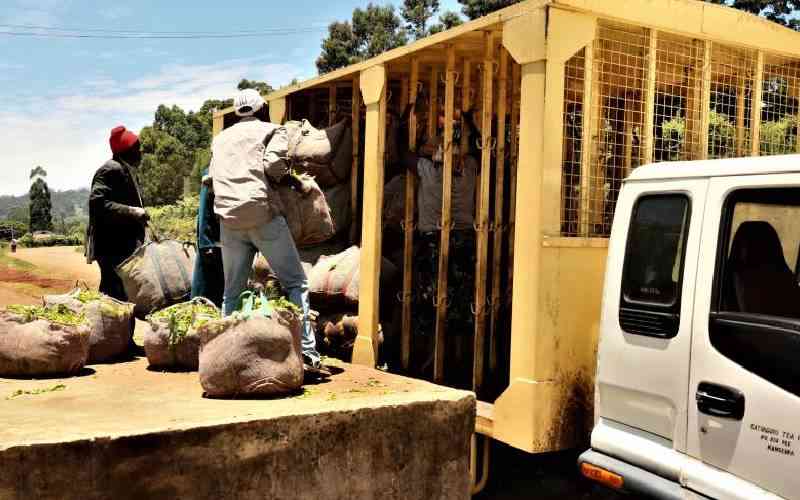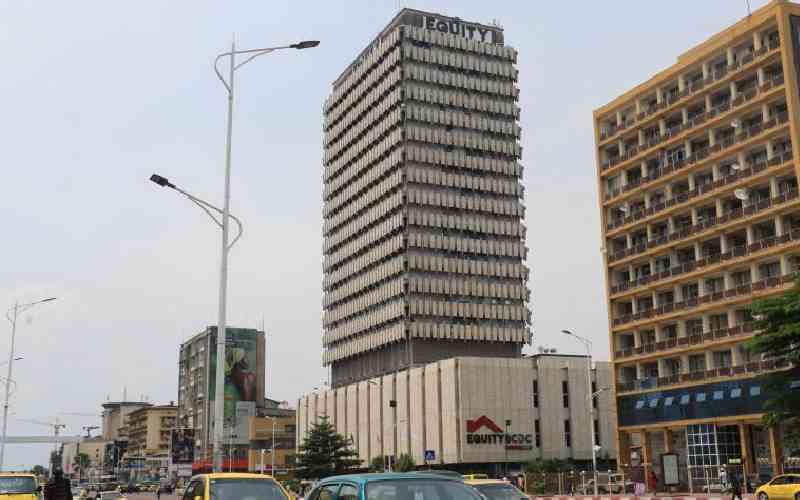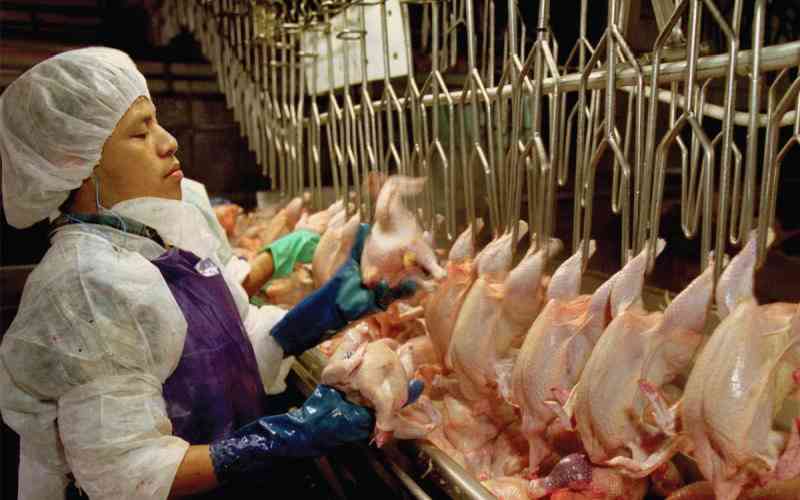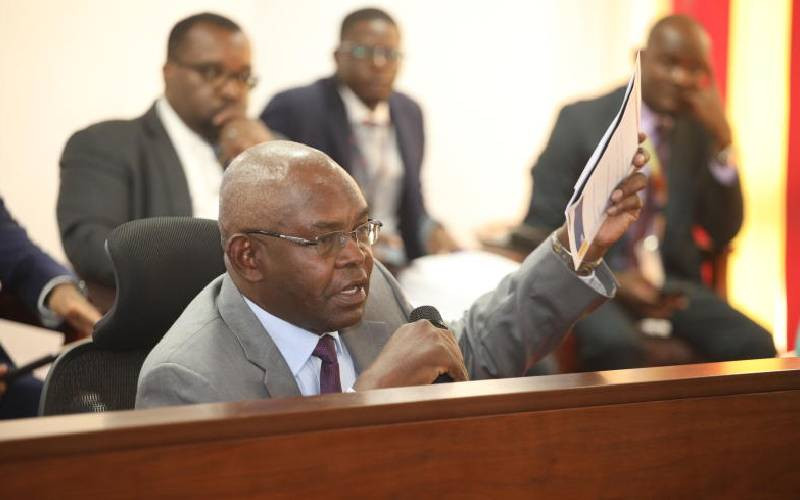
CBK Governor Kamau Thugge before the National Assembly Committee on Finance and National Planning at Bunge Towers, Nairobi, on March 25, 2025. [Elvis Ogina, Standard]
Major commercial banks are under scrutiny for their slow response to the Central Bank of Kenya’s (CBK’s) latest interest rate cut.
The move, analysts say, highlights the longstanding trend of lenders being quick to hike but slow to lower borrowing costs.
Mid-August, CBK cut its benchmark interest rate by 25 basis points to 9.50 per cent – the third reduction this year and the seventh since last year - in a bid to stimulate economic activity and boost private sector credit growth, which remains sluggish.
Despite the easing cycle that began in late 2024, commercial banks have been criticised by the regulator for keeping lending rates elevated, stifling borrowing even as inflation stabilises and the economy shows signs of resilience.
“The Monetary Policy Committee (MPC) concluded that there was scope for a further easing of the monetary policy stance,” CBK Governor Kamau Thugge said in a statement.
He noted that while non-performing loans (NPLs) had eased in some sectors like manufacturing, they, however, remained high in trade and tourism.
NCBA Group is among the tier one lenders that have so far publicly announced a reduction in base lending rates.
The lender became the first major bank to respond, announcing a 25 basis point cut in its Kenya shilling base rate to 13.52 per cent effective September 20 for variable-rate loans.
Its dollar lending rate will fall to 10.50 per cent. Other top-tier lenders in Kenya’s 39-bank-strong sector are yet to communicate similar adjustments, reflecting a cautious approach despite pressure from regulators and businesses.
According to the CBK’s July 2025 CEOs Survey, firms continue to cite “constraints in business financing (inability to secure credit, cost of credit)” as a major barrier to expansion.
The same report noted that while 69 per cent of firms reported a decline in bank lending rates, the reduction was “marginal at two per cent and below.”
The Market Perceptions Survey for July also highlighted that “high lending rates” and “reduced business incomes” were key challenges in accessing finance, with banks often reluctant to lower rates or restructure loans.
Private sector credit growth improved marginally to 3.3 per cent in July from 2.2 per cent in June, but remains far below the CBK’s ideal range of 12 to 15 per cent considered necessary to support meaningful economic development.
Stay informed. Subscribe to our newsletter
“More respondents reported declined bank lending interest rates… however, the magnitude of the decline is marginal,” the CEOs’ Survey stated.
Banks have often been accused by borrowers and regulators of “asymmetric transparency” – quick to raise rates when the CBK tightens monetary policy but slow to pass on benefits when cuts are made.
The MPC’s decision comes against a backdrop of stable inflation, which stood at 4.1 per cent in July, and GDP growth of 4.9 per cent in the first quarter of 2025. The bank projects full-year growth of 5.2 per cent.
With the next MPC meeting scheduled for October, all eyes are on whether commercial banks will broaden access to affordable credit and support the CBK’s efforts to revitalise the economy.
“Respondents expect recovery in private sector credit growth in 2025, supported by declining bank lending rates,” the Market Perceptions Survey noted – an expectation now hanging in the balance as lenders weigh their next move.
